Recent Fire Damage Posts
The Importance of Proper Ventilation During Fire Restoration
12/18/2023 (Permalink)
During the restoration process, whether it's due to water damage, fire damage, or mold growth, proper ventilation plays a crucial role. Ventilation is not only about creating a comfortable environment; it is essential for the health and safety of both the occupants and the restoration workers. In this blog, we will explore the importance of proper ventilation during restoration and its key benefits.
Removal of Odors and Airborne Contaminants
Restoration projects often involve the use of chemicals, cleaning agents, and paint, which can release strong odors and airborne contaminants. Proper ventilation helps to remove these odors and contaminants, improving the air quality in the affected area. It ensures a healthier and safer environment for everyone involved.
Prevention of Mold Growth
Mold thrives in damp and humid environments, making it a common concern during restoration projects. Proper ventilation plays a crucial role in controlling moisture levels and preventing mold growth. By increasing airflow and reducing humidity, it helps to dry out the affected area, preventing mold spores from spreading and potentially causing health issues.
Drying Out Materials and Speeding Up Restoration
Whether it's water damage restoration or drying out after extinguishing a fire, proper ventilation is vital for drying out materials effectively. It aids in the evaporation of moisture, reducing the risk of further damage and allowing for faster restoration. By facilitating the drying process, ventilation can help minimize overall downtime and inconvenience.
Removal of Harmful Gas
Restoration projects may involve the removal of hazardous materials, such as asbestos or lead-based paint. Proper ventilation helps to remove harmful gas and particles generated during removal or abatement processes. It protects both the occupants and restoration workers from exposure to these hazardous substances.
Control of Indoor Temperature and Humidity
Proper ventilation helps to regulate indoor temperature and humidity levels, creating a more comfortable environment for both the occupants and the restoration crew. It prevents excessive heat or moisture buildup, which can lead to discomfort and health issues. Maintaining a comfortable environment also enhances productivity and focus during the restoration process.
Protecting the Structural Integrity
Ventilation aids in the drying of structural components, such as walls, floors, and ceilings, preventing moisture-related issues that can compromise their integrity. Moisture trapped within these materials can lead to warping, rotting, or weakening of the structure, potentially requiring costly repairs in the future. Proper ventilation helps to preserve the structural integrity of the building.
Compliance with Safety Standards
Proper ventilation is not only important for health and comfort but also for meeting safety regulations and standards. Many jurisdictions have specific regulations regarding ventilation requirements in restoration projects, especially those involving hazardous materials. By ensuring proper ventilation, you can ensure compliance with these regulations and avoid potential legal consequences.
In conclusion, proper ventilation is crucial during the restoration process for several key reasons. It aids in the removal of odors and airborne contaminants, prevents mold growth, speeds up drying and restoration, removes harmful gas, controls indoor temperature and humidity, protects structural integrity, and ensures compliance with safety standards. By prioritizing proper ventilation, you can create a healthier, safer, and more efficient restoration environment for all involved.
How Many Fire Alarms Should I Have in My Home? Understanding Fire Safety Guidelines
9/12/2023 (Permalink)
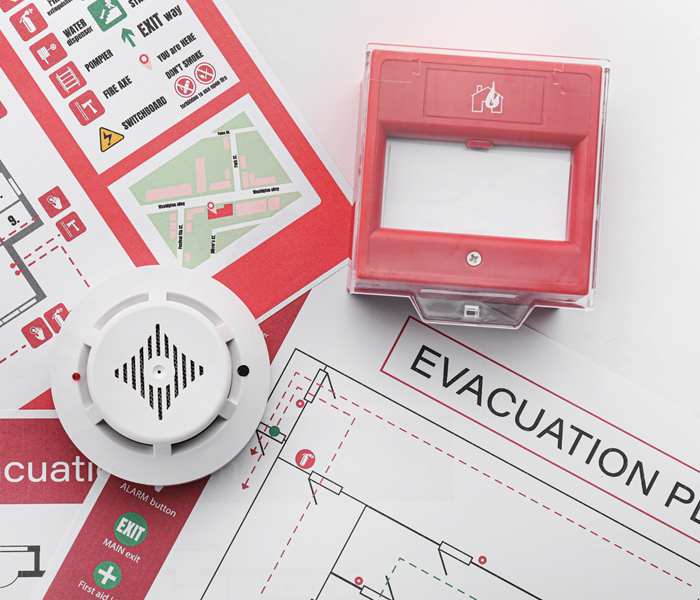 Having the right amount of fire alarms and evacuation plan incase of a fire or emergency.
Having the right amount of fire alarms and evacuation plan incase of a fire or emergency.
Fire safety is critical for every homeowner, and one of the most crucial components of fire safety is smoke alarms. Smoke alarms are designed to detect the presence of smoke and alert you to the dangers of a fire. But how many smoke alarms do you need in your home to ensure maximum safety? In this blog post, we'll take a closer look at the fire safety guidelines and recommendations for smoke alarms.
Basic Guidelines for Smoke Alarms
The National Fire Protection Association (NFPA) recommends that every home have a smoke alarm installed in every bedroom, outside each sleeping area, and on every level of the home, including the basement. However, the specific number and placement of smoke alarms depends on the size and layout of your home.
When determining how many smoke alarms you need in your home, consider the following guidelines:
- Consider the Size and Layout of Your Home. The number of smoke alarms you need depends on the size and layout of your home. Larger homes or those with multiple levels may require more smoke alarms to ensure adequate coverage. When determining the placement of smoke alarms, consider the location of sleeping areas, stairwells, and other areas where fires are most likely to occur.
- Follow Local Fire Safety Codes. In addition to the NFPA recommendations, you should also follow the local fire safety codes for your area. Many states and municipalities have specific requirements for smoke alarms based on the size of the home and the number of occupants.
- Use Combination Smoke and Carbon Monoxide Alarms. Carbon monoxide is a deadly gas that can accumulate in your home without warning. Combination smoke and carbon monoxide alarms are recommended to ensure adequate detection and protection against both smoke and carbon monoxide.
Test smoke alarms regularly. Once installed, smoke alarms should be tested regularly to ensure they are functioning correctly. The NFPA recommends testing smoke alarms at least once a month and replacing batteries every six months. Smoke alarms should also be replaced every ten years.
Ensuring your home has an adequate number of smoke alarms is critical for fire safety. Generally, the NFPA recommends having a smoke alarm in every bedroom, outside each sleeping area, and on every level of the home. However, the specific placement and number of smoke alarms depend on the size and layout of your home and local fire safety codes. Remember to test your smoke alarms regularly and replace them every ten years to ensure maximum safety and protection against fire. Also having an evacuation plan in place can help redirect your family and protect them incase of a fire or emergency. Practice the evacuation plan periodically to ensure all the member of your household know where to meet incase of a fire.
4 Ways a Board Up Secures Your Home After a Fire
8/29/2022 (Permalink)
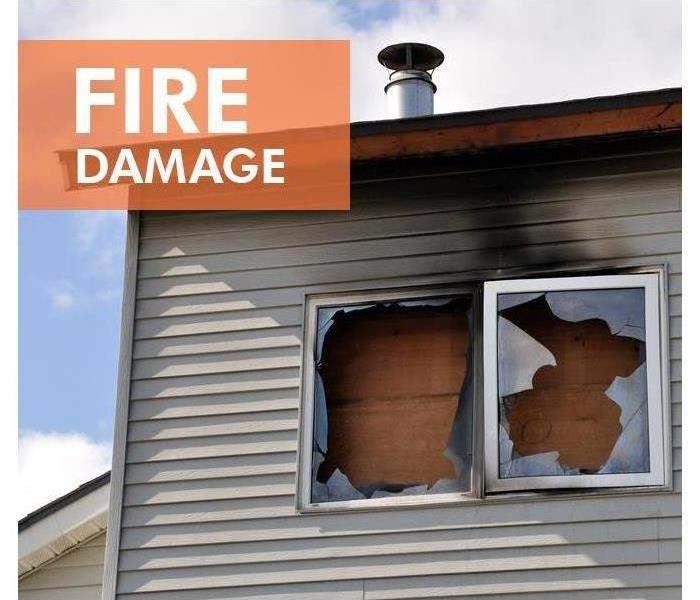 Secure your home after a fire
Secure your home after a fire
Four Techniques for Securing Your Home After a Fire
Your home in Monticello, LA, is particularly vulnerable right after a fire. The flames have likely caused structural damage to your home, and fire fighting efforts often bust down doors, crash in windows and even blast holes into your roof. Once the fire crew has departed, you are left with a home that is exposed to the elements, leaving open the possibility of further damage. A board up might be your best option to secure your home. It protects the house from multiple dangers.
1. The weather - An emergency board up makes sure a sudden rainstorm doesn't soak your home. The boards will cover openings and prevent water from entering. In some cases, the restoration crew will put a tarp over a roof to give better weather protection.
2. Criminals - A damaged home can be seen by some people as an invitation to take a look inside. They are more likely to enter a house that has easy access. A professional board up will makes things more difficult for thieves and vandals to get into your home after a fire.
3. Animals - Animals seek out shelter in homes even in the best of times. The damage from a fire allows animals such as squirrels, bats, rats and birds to take up residence in your home. These critters can even cause additional damage to your property if you do not take appropriate action after fire damage.
4. The curious - Children and even curious adults sometimes see a vacant home after a fire as a place to explore. This could create liability issues for your property. Since a home after a fire is likely to be full of hazards, you definitely do not want people roaming around inside it.
A professional fire restoration company will be experienced in securing your home after a fire. The workers will be able to install a board up safely. This will keep your home secure until the damage is fixed and your home is restored.
3 Tips for Fire Hazard Mitigation While Cooking
5/30/2022 (Permalink)
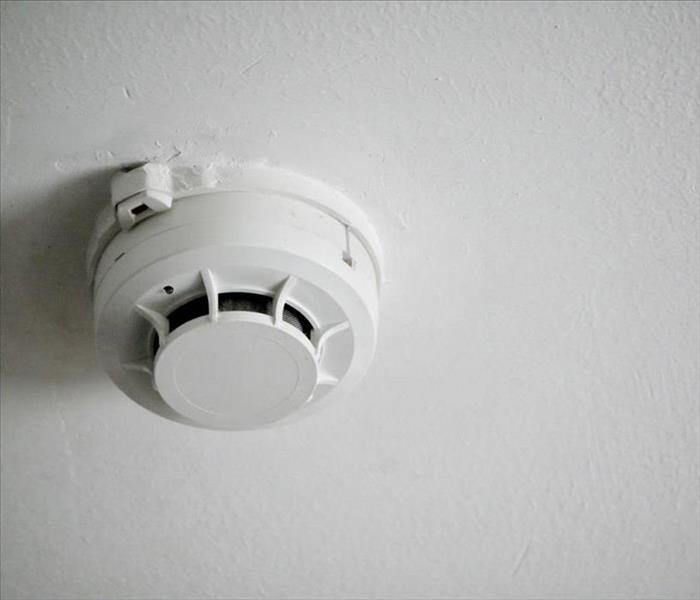 Smoke detectors can alert you to the danger so you can evacuate in time.
Smoke detectors can alert you to the danger so you can evacuate in time.
Three Tips for Preventing Fires While Cooking
According to the National Fire Protection Association, from 2014 to 2018 U.S. fire departments were called to approximately 172,900 home fires connected to cooking activities. Kitchen fires are the leading cause of residential fires in the nation and can result in serious fire damage that may require the services of a professional restoration business in Baker, LA, to deal with. It is important to take safety precautions to lower the likelihood of a devastating event like a grease fire occurring. Here are three tips for doing so.
1. Keep Flammable Items/Substances Away From the Cooking Area While Cooking
If you have your stove or oven on, combustible things like wooden utensils, oven mitts, oil-coated spatulas and food wrappers can easily go up in flames, so it is important to move them out of the danger zone. Grease splatters, puddles and buildup also easily catch fire, so it is important to keep your work area clean.
2. Install the Appropriate Equipment
There are some things your home needs in case of a fire:
- Carbon monoxide monitors
- Smoke detectors
- Fire extinguishers
Having these valuable tools can help you identify and handle such situations before they become too severe, or at least alert you to the danger so you can evacuate in time.
3. Don't Leave Fires Unattended
This is one of the most important tips. You do not ever want to walk away from cooking food. If you need to take a phone call, go to the bathroom for a prolonged period of time or leave the proximity for some other reason for longer than a couple of minutes, you should turn the range or stovetop off.
These are not the only fire safety tips you should heed. However, they are important ones. Fire, and by extension cooking, is not something to be taken lightly. Because of this, it is best not to cook while tired or distracted, particularly if you are frying something or using grease.
3 Fire Extinguisher Facts Every Business Should Know
3/25/2022 (Permalink)
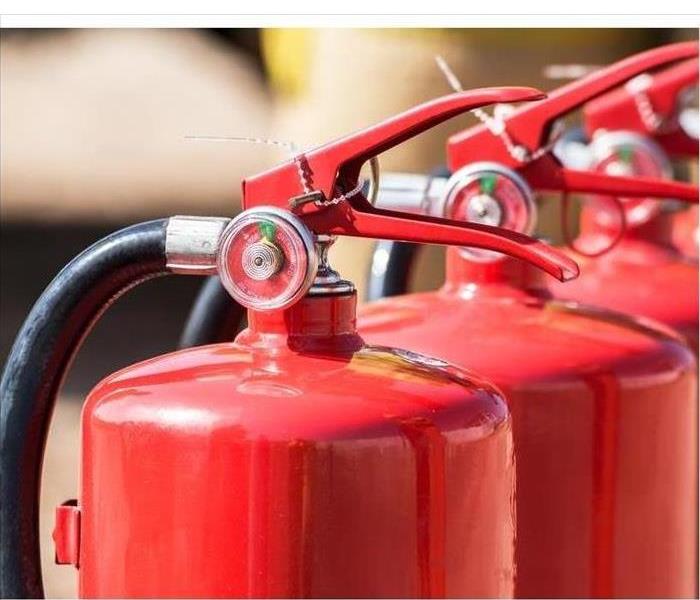 A fire extinguisher is designed to battle specific types of infernos.
A fire extinguisher is designed to battle specific types of infernos.
3 Fire Extinguisher Facts
A fire extinguisher is a crucial piece of safety equipment that can save lives and spare commercial properties from extensive damage mandating professional cleanup and restoration. Because of this, every business in Monticello, LA, should maintain at least one functional device. To ensure it’s readily available in an emergency, every owner and manager should also recognize three key facts about this vital fire suppression tool.
1. Device Doesn’t Last Forever
Extinguishers do not have an indefinite shelf life. Unfortunately, they also do not typically come with an expiration date sticker.
To determine the viability of your device, you should complete annual inspections and check for compromised components. Specific defects that may make it unusable include a broken handle, missing locking pin or a cracked nozzle. The gauge should also be in green. If it’s not, replace the device.
2. Multiple Types Exist
A fire extinguisher is designed to battle specific types of infernos. Class K units, for example, can douse a kitchen fire sparked by grease while a Class A device is designated for use with blazes involving ordinary combustibles, such as wood and paper. Additional distinctions include Class C for electrical fires and Class B for flammable liquids.
Attempting to smother flames with the wrong type of device can be ineffective. To combat this potential dilemma, evaluate your company’s specific fire risks and purchase your extinguisher accordingly. Check the canister’s label to confirm the class. You can also purchase a multipurpose device, which can be used against a variety of blazes.
3. Should Be Accessible and Visible
Minimizing fire damage requires prompt action. To ensure an expedited response, mount your extinguisher in a safe, accessible place and post signage to identify its location. You should also ensure staff recognize this area and refrain from blocking the site.
Because an inferno can erupt suddenly, having a functioning fire extinguisher easily accessible is a crucial safety strategy. Understanding key aspects of the device can ensure it’s in prime operating condition and ready to perform in an emergency.
When Can You Enter Your Home After a Fire?
2/23/2022 (Permalink)
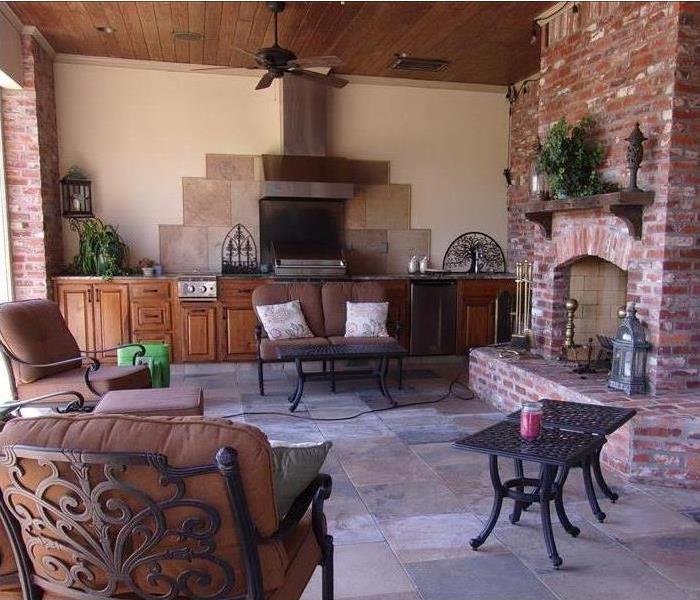 Did you know that SERVPRO offers fire damage cleanup and restoration services? Our crew is faster to any size fire damage disaster that might occur.
Did you know that SERVPRO offers fire damage cleanup and restoration services? Our crew is faster to any size fire damage disaster that might occur.
When Is It Safe To Return Home After A Fire?
If a fire started unexpectedly in your home and you were able to successfully escape, you are likely thankful for your safety but eager to try and rescue your belongings. Even if the fire has stopped burning or your home appears safe to enter, it is important you wait until a fire damage cleanup team can come to the site and assess the situation. Continue reading to learn when you can safely enter your home in Baker, LA, again after a house fire.
Steps To Take As Soon You Evacuate Your Home
As soon as you and all your family members escape your home, follow these steps:
- Call 9-1-1
- Get in contact with your insurance agent
- Call a fire restoration company to board up your home
What Is Emergency Board Up?
After fire damage has affected your home, there’s no way to know for sure if the structure is safe enough for you to enter. You will be able to enter home after it has been assessed and safely secured with board ups and tarp overs wherever necessary. This process involves boarding up broken windows and doors and placing tarps over a broken roof and areas with stability or leakage issues. This prevents further damage to your home, someone getting hurt, or someone easily gaining access to your home.
Who Can Perform an Emergency Board Up?
You should never perform a board up on your own. While you might want to reduce costs by doing the process yourself, you can create extensive damage to your home and put yourself at risk. It is in your best interest to wait until the fire restoration team can come and determine what action needs to be taken.
It is important to take all the necessary steps after a fire occurs in your home before you trying entering your home. Once you get into contact with the restoration company and they board up your home, you’ll be able to safely enter the house.




 24/7 Emergency Service
24/7 Emergency Service




